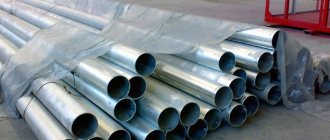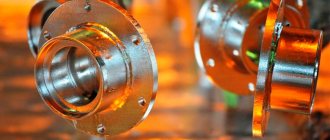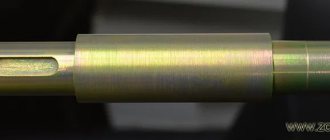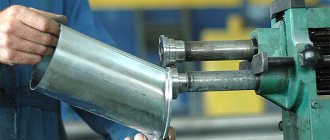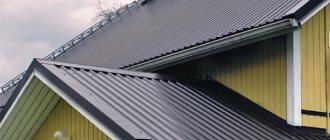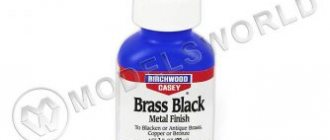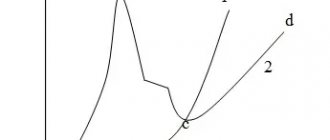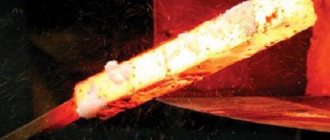Electroplating of metal is an electrochemical method of protection from adverse external influences. A thin metal film protects parts from chemicals and moisture, extends service life and improves appearance.
The technology of applying galvanic coatings is simple and economical, due to which it has become widespread in various fields:
- Construction . The galvanic method is used to coat metal structures used in the open air.
- Aviation and mechanical engineering . To protect parts from exposure to adverse factors.
- In the instrumentation and electronics industries, electroplating is used to protect active metal contacts.
- Medicine . Used in the production of medical and surgical instruments.
- Chemical industry . For the manufacture of laboratory glassware.
- Production of consumer goods , including sanitary ware, dishes, interior items, furniture, etc.
Principle
The scheme by which metal electroplating is implemented is quite simple. It includes a product on which a protective coating is applied, a container with an electrolyte solution where the product is placed. The third participant in the process is a metal plate, to which a positive current charge is applied; it acts as an anode; the product placed in the solution becomes a cathode, where a negative charge is applied.
When the electrical network is closed, the metal of the anode (plate) dissolves in the electrolyte and, under the influence of current, rushes to the negatively charged product (cathode), thereby creating a durable coating. An electrolyte is a conductive solution for moving metals from the anode to the cathode. The size of containers (baths) with electrolyte varies, depending on production tasks.
Large products are placed on hangers through which a negative charge is passed; the structure is held suspended in the volume of the bathroom. Small products are galvanized in drum-type baths, where a large number of products are simultaneously galvanized. In this case, a negative charge is applied to a drum rotating in a container with electrolyte, where the anode is inserted.
There are bell-type filling baths, where galvanic coating is simultaneously applied to a large number of very small parts, for example, hardware. Products are poured into the container, the electrolyte composition is poured in, and the anode is installed. The baths are given a slow rotation, during which the products are evenly coated with protective metal.
Aluminum and its alloys.
Aluminum is one of the main types of structural materials, widely used in electrical engineering, instrumentation, mechanical engineering and aircraft construction. Aluminum is lightweight and corrosion-resistant in the atmosphere due to the thinnest passive film of several nanometers present on its surface. Aluminum conducts electricity and heat well. The price of aluminum is lower than other non-ferrous metals, and natural reserves are huge. However, aluminum also has a number of disadvantages. It solders worse than tin, does not have wear resistance, and is almost impossible to polish to a mirror shine. In a salt environment, alkalis, hydrochloric acid and a number of other reagents, aluminum actively corrodes. When in contact with copper parts or stainless steel, aluminum forms a corrosive galvanic couple. Therefore, the surface of aluminum often needs to be modified by galvanic or chemical coatings.
Among the coatings on aluminum, two groups can be distinguished: oxide and metal. Chemical and anodic oxidation of aluminum does not present any great difficulties with established production technology. At the same time, the application of metal coatings requires serious surface preparation and the mandatory application of one or two technological sublayers. This is due (as with stainless steel or titanium) to aluminum's ability to passivate almost instantly. The passive film is easily restored to a wet part after etching and prevents further adhesion of the coating and the substrate. Moreover, if aluminum is poorly prepared after metallization, hidden defects may form and the coating may “bubble” during storage even after several months or during soldering. For this reason, all metal coatings on aluminum must be tested for adhesion in 100% of cases by at least two methods according to GOST.
The division of aluminum alloys into wrought and cast alloys is due to the peculiarities of molding semi-finished and finished products from them.
Wrought aluminum alloys are intended primarily for subsequent turning, milling, extrusion, etc. They differ in composition from foundry ones in the absence or insignificant content of silicon in them. When etching deformable alloys, a sludge of alloying additives and intermetallic compounds is formed on their surface, which, during the subsequent mandatory clarification operation, is easily removed with ordinary nitric acid and does not interfere with the coating. During the anodizing process, such sludge dissolves in the electrolyte and also does not accumulate on the surface. The presence of silicon in the aluminum alloy (and, as a consequence, in the etching sludge) would make the processes of oxidation and metallization of aluminum much more complex. Thus, coating of wrought aluminum alloys is easier than that of cast aluminum alloys.
Cast aluminum alloys are one of the main structural materials widely used in electrical engineering, instrumentation and aircraft manufacturing. Cast aluminum alloys are characterized by a high silicon content, which is associated with high complexity in preparing their surface before coating. Any coating of cast aluminum is a complex process due to the presence of an oxide film on its surface and the formation of silicon powder on the surface during etching. All this prevents strong adhesion of the coating to the base. This problem is solved by using special preliminary preparation operations.
Methods
The galvanic method of coating products allows you to create a durable protective coating on metals, isolating parts from the aggressive effects of working environments. Insulation can be created from various metals; application is carried out by anodic and cathodic sputtering.
Cathodic coating is characterized by the fact that at the slightest violation of the integrity of the applied layer, the metal underneath is destroyed more intensively, which is facilitated by the coating technology itself. An example of rapid erosion is tinned metal products, where tin serves as an insulating layer.
Anodic electroplating has different characteristics. When conditions arise that threaten corrosion, the galvanic insulation is destroyed and the metal remains intact for a long time. Anodized products are reliably protected from aggressive environments and mechanical damage. The most common type of insulation is galvanizing. The method allows you to preserve all the characteristics of the processed product, its appearance, shape and size.
Goals
Galvanic coatings are divided into several types depending on the purpose of the product:
- Protective and decorative. The purpose of application is to obtain high aesthetic characteristics and protect products from destructive factors.
- Protective. They isolate metal parts from aggressive environments and mechanical damage.
- Special purpose. Galvanic coating is applied to obtain new properties - increased wear resistance, increased hardness characteristics, obtaining magnetic and electrical insulating properties of the finished product. In some cases, galvanization is used to restore the original appearance of a product or after long-term use.
Types of coatings
The galvanic coating method is implemented by applying various metals to the product, each of them has its own characteristics and purposes in the further operation of the part or object:
- Silver plating – increases aesthetic value, protects against corrosion, improves reflective and conductive characteristics. This type of application is in demand in the production of static relays, contactors, electromagnetic relays, electromagnetic starters, microcircuits and other electronic products.
- Nickel plating is the most popular galvanic coating of steel, copper and aluminum products. The nickel layer reliably protects products or machine parts from rust formed under the influence of the external environment, as well as from types of corrosion resulting from contamination of the working environment by aggressive media - alkalis, acids, salts. Nickel-plated products demonstrate high resistance to severe mechanical damage and abrasion.
- Chrome plating - increases the wear resistance and hardness of anodized surfaces, improves the appearance, and restores damaged parts to their original parameters. Depending on changes in the technological regime, a galvanic coating with different parameters and properties is obtained - matte gray (increased hardness, but low wear resistance), shiny (high wear resistance, hardness), milky plastic (aesthetics, high degree of anti-corrosion protection, low hardness), galvanizing – anti-corrosion treatment of solid steel sheets, car parts, construction and finishing materials.
- Electroplated gold plating - used in jewelry, electronics and other fields. The gold layer gives the parts high reflective properties, aesthetics, protection against corrosion, and increases conductive qualities.
- Copper plating - often used to coat metal to protect against corrosion; copper improves current-conducting qualities; metal with such a coating is often used for the production of electrical conductors used outdoors.
- Brass plating – used to protect steel, aluminum and alloys from corrosion damage. The brass layer provides the necessary adhesion of metal parts to rubber.
- Rhodium plating is a special coating applied to give parts high resistance in chemically aggressive environments and to obtain additional mechanical wear resistance. Rhodium plating also adds decorative value to products and protects silver items from oxidation and dullness.
Regulation of the quality and technological processes of galvanic coating occurs using GOST 9.301-78.
Types of galvanic coatings
To protect metal products, various types of galvanic coatings are used, including those made of precious metals. They are rarely used, as a rule, in radio engineering, instrument making and jewelry production.
The most widespread are:
- Copper . It is not used independently in industry. This is due to the fact that copper quickly oxidizes when interacting with oxygen. Most often it is used as a sublayer, to improve the quality of the coating, in combination with other metals: nickel and chromium.
- Chrome . Chrome plating is widely used in industry to reduce friction in mechanisms, increase wear resistance and corrosion resistance. It is used not only for protection, but also for restoration of metal parts, as well as for decorative purposes, since the coating has a beautiful mirror surface.
- Zinc . Galvanizing is one of the most popular technologies. Galvanic coating has a high protective effect, which allows you to extend the service life of metal products for decades. Galvanized items have become popular among decorators and are successfully used for interior decoration.
- Nickel . Characterized by durability and high aesthetic properties. Nickel plating is used in many areas: the production of plumbing fixtures, construction, mechanical engineering, the chemical industry, medicine, and the production of consumer goods. Nickel often acts as an underlayer in chrome plating. It is actively used to create decorative products because it can be used on non-metallic surfaces, such as glass, ceramics, etc.
Recently, decorative items that imitate antique ones have become very popular. Copper has proven to be a fertile material for decorators. It is available, easy to process, and the galvanic coating process does not require large financial costs. Its properties make it possible to galvanize unusual materials, such as plants, and create unique decorations.
Compatibility of processed metals
When using the galvanic method (in the selection of contacted metals), it is necessary to take into account their galvanic properties. This also applies to any production where products are made from different metals. The fact is that the interaction of dissimilar metals leads to a phenomenon called contact corrosion - for example, the use of copper rivets to fasten aluminum sheets will lead to the creation of a galvanic couple and, as a result, severe corrosion.
Each of these metals has its own electrode potential. Upon contact with an electrolytic composition, one of them becomes an anode and the other a cathode. During the reaction, aluminum is the anode. Copper, in this case acting as a cathode, contributes to the rapid destruction of aluminum.
It must be taken into account that almost all dissimilar metals that interact with each other cannot be guaranteed to be protected from corrosion. The reason is that when metals come into contact, even moisture in the air can become an electrolyte: its particles are quite capable of starting the galvanization process.
This table provides data on the compatibility of galvanic pairs:
Characteristics of galvanic coatings
The results of galvanization of parts are assessed by monitoring the properties of the resulting coating. It has the following properties:
- Electrical parameters of the coating . In the manufacture of conductive components, this characteristic of the electroplating of products is key;
- Texture. Depending on the chosen galvanization technique, the coating may have varying degrees of surface roughness;
- Hardness _ This coating characteristic is assessed using specialized measuring equipment.
Preparatory stage
Electroplating is a multi-level technological process implemented in three main stages (preparation, coating, final processing of the finished product).
Preparing surfaces for further galvanization is the most labor-intensive and critical stage of the entire process. The quality of the resulting protective coating depends on the correctness and sufficiency of its implementation. If there is the slightest trace of grease and oxide film on the metal surface, it will be impossible to obtain a homogeneous continuous protective film - the coating will not be able to penetrate the layers of the base metal, bubbles, tears, etc. may form.
Defects can occur in places where burrs remain, surface unevenness, in places of poorly polished joints, in places that are not sufficiently cleaned of dust. Electroplating requires low surface roughness, thorough cleaning after grinding and mandatory treatment with degreasing agents.
Zinc-aluminum-copper alloys (ZAM).
TsAM is an alloy of zinc with aluminum and copper. This material pours easily and with high precision. A special feature of the coating of this material is the presence of a cast crust and hidden micropores on its surface. In view of this, there is a great danger of “bubbles” appearing on the coating. In addition, zinc alloy perfectly absorbs hydrogen generated during galvanic operations. Hydrogen is sorbed during coating and partially desorbed during storage. However, it can also contribute to the formation of “bubbles”. To obtain a high-quality coating that is firmly adhered to the surface of the CAM, it is necessary to use specialized technologies.
Types of parts processing
Mechanical processing and achieving ideal smoothness of metal parts is achieved at home by grinding the surface with sandpaper and other abrasives; on an industrial scale, sandblasting, chemical, and automated methods are used to achieve results. At the preparatory stage, parts or individual areas that are not subject to galvanization are insulated.
Depending on the type of metal being applied, different preparations are carried out. Before galvanizing or cadmium plating, the surface of the part to be protected is degreased and pickled. Chrome and nickel plating is preceded by mechanical grinding, degreasing, and removal of the oxide film. Degreasing is carried out in two stages - starting work and complete degreasing.
The parts are first washed with solvents - white spirit, gasoline, special organic mixtures, etc. The final treatment is carried out using alkaline solutions or the electrochemical method. After which the parts are washed with hot water, the metal is activated and lightly etched to remove the smallest films of oxides, which improves the adhesion of the surface of the part with the galvanized metal coating.
How the process works
The deposition of a protective layer of metal on products is carried out using special equipment. Differences in the application of types of electroplating are reflected in the formulation of the electrolyte used.
The galvanic method of coating metals and other materials occurs as follows:
- Galvanic baths are filled with an electrolytic solution. Anodes and workpieces are placed in them. The size and type of bath depend on the size of the parts requiring coating.
- The heating device brings the temperature of the electrolytic composition to the required technologically justified value.
- The design is supplied with current from a source equipped with a voltage regulator.
- The galvanic coating process takes a certain time, its value is determined by the size of the part and the achievement of the required thickness of the protective layer.
Process Features
In some cases, with the galvanic coating method, the workpieces are hung on a cathode rod located in the bath, and plates of the metal that will coat the products are placed on the anode rod. To obtain certain characteristics of the coating, metal salts, organic compounds, brightening agents, etc. can be introduced into the electrolyte.
To speed up the process of metal transfer, the electrolyte is stirred, which makes it possible to use a higher current density. Reversing the direction of current allows you to obtain a smooth surface.
The exact duration of the galvanic coating process is established experimentally - by applying a protective layer to the part, measuring the thickness of the resulting layer over a certain period of time under given process conditions. At the adjustment stage, special attention is paid to the thickness of the layer in the recesses and cavities of the experimental part being processed.
Layer thickness
The thickness of the galvanic coating is determined according to data on the average thickness of the applied layer and depends on the conditions in which the part will be used. They are divided into groups:
- Light conditions (LC) - parts are used in closed heated rooms with a relatively dry atmosphere, or the product will be used for a short period of time in an external environment where there are no active corrosive agents. The thickness of a single-layer coating is about 7 microns, a multi-layer coating is 15 microns.
- Average Conditions (AC) - Parts will be used in environments with average humidity, pollution, small amounts of fuel, industrial emissions or seawater vapor. The thickness of a single-layer coating is 15 microns, a multi-layer coating is 30 microns.
- Severe conditions (HS) - involve the operation of parts in conditions of high humidity, increased levels of pollution with industrial gases, fuel waste, solids, and dust. The thickness of a single-layer coating is 30 microns, a multi-layer coating is 45.
Data on the thickness of galvanic coating of parts in one layer is contained in GOST 2249-43. This includes zinc coatings. Controls multilayer application of galvanic coating GOST 3002-45 (nickel coatings). The thickness of the layer can be changed according to design requirements or in cases where the workpiece is designed for a short service life. The service life of galvanizing is up to 5 years, for other types of coatings – up to 3 years.
Titanium and its alloys.
Titanium is the most important structural material with a number of unique properties. Titanium is light, which is due to its low density (4540 kg/m3). It is almost 2 times lighter than iron, although it is inferior in this indicator to aluminum by the same amount. Along with being lightweight, titanium is highly durable. Unique is titanium’s ability to passivate and, as a result, its exceptional corrosion resistance. Industrial gases, salt water and oxidizing agents do not cause any harm to titanium. However, despite all the positive qualities, titanium is expensive, difficult to process and mold, and has a high coefficient of friction. Soldering and welding titanium is complex and time-consuming. It is 24 times worse at conducting electricity than copper, 16 times worse than aluminum and 4 times worse than steel. Titanium is inferior in thermal conductivity to aluminum by almost 15 times, and steel by 5 times. In terms of thermal conductivity, titanium is also 15 times worse than aluminum, and steel by 3.5 times. At high temperatures, titanium actively interacts with oxygen, nitrogen, carbon, halogens (chlorine, bromine, iodine, fluorine), as well as sulfur. Even at room temperature, titanium is unstable in alkalis and hydrogen peroxide.
The application of protective and decorative galvanic coatings on titanium can improve many of its properties and eliminate its shortcomings. Chrome plating of titanium increases its wear resistance and heat resistance. To increase the electrical conductivity and solderability of titanium, tin plating (tin-bismuth), copper plating and silver plating are used. Anti-friction properties are improved when coated with tin-lead and lead. Nickel and nickel-phosphorus alloy (chemical nickel) protect titanium from the effects of alkalis at any concentration and temperature. The appearance of titanium is enhanced by shiny chrome, nickel and tin-bismuth coatings. Anodic oxidation is often used for decorative finishing of titanium. In this case, unlike colorless translucent oxides on aluminum, a colored film is formed on titanium. Its color depends on the voltage applied to the part, which can reach up to 120 V. Anodizing can be used to paint titanium in light green, dark gray, blue, black, gold and other colors.
Applying metal coatings to titanium requires a lot of experience and presents significant challenges. Due to the ability to passivate almost instantly, titanium always has a layer of oxides on its surface, which sharply impairs the adhesion of coatings. In addition, hydrogen easily diffuses into titanium during surface preparation. Accumulating at the base/coating interface, it will also cause peeling and deteriorate the physical and mechanical properties of the part.
Processing of the finished product
Galvanic coating of parts is completed by an additional processing stage. The following operations are implemented in this process:
- Lightening.
- Painting with paints and varnishes.
- Passivation.
- Dehydration.
- Oiling or polishing.
- Performing silver plating with anti-tarnish compounds.
Lightening and passivation increase the anti-corrosion properties of galvanized products and cadmium coatings. The passivation process is the immersion of products in a special solution, which forms a protective film up to 1 micron thick on the surface of the part.
Products made of steel and copper with galvanic coating are additionally treated with oils - oiled. This is done in order to improve the protective qualities of metal insulation and helps to increase anti-corrosion resistance.
Equipment and materials
The following equipment is used to carry out work related to galvanic coating:
- galvanic baths made of material resistant to electrolytes;
- heating devices;
- source of direct electric current;
- system for fastening electrodes: anode and cathode (taking into account the fact that the cathode is the workpiece);
- equipment for preliminary preparation of parts.
The assembled installation can be used both in industrial conditions and in a home workshop. To carry out electroplating in a home laboratory or workshop, it is necessary to accurately calculate the expected consumption of the necessary materials and the time the part will remain in the electrolyte solution.
As consumables, galvanization requires the selection of appropriate electrolyte and anodes. They are used depending on the method of processing the part. Currently, a large number of electrolytes have been developed for galvanic processing. For example, sodium or potassium cyanide, sodium or potassium carbonate solution, hyposulfite. The use of various metals or mixtures in a salt solution allows you to select the necessary properties of the surface layer of the workpiece. In addition to liquid solutions, cold suspensions are used. It is used to carry out the cold galvanizing process. It is directly applied to the surface of the part.
Quality control
Requirements for the quality of galvanic coating depend on the operating conditions of the processed product. To assess application, the following types of control are used:
- Assessment of the appearance of a part through visual inspection, comparison with reference samples (surface cleanliness, color, presence or absence of gloss).
- Determination of the thickness of the galvanic coating and porosity is carried out in laboratory conditions (measurement).
- Corrosion resistance according to TU or GOST (test).
- Mechanical, physical stability (reflective properties, ductility, wear resistance, electrical and temperature resistance, hardness, etc.)
Advantages
The advantages of this method of protecting metal products include:
- High anti-corrosion qualities.
- Resistance to mechanical and physical damage.
- Resistance to aggressive environments of natural and industrial origin.
- Low porosity of the coating.
- Hardness, wear resistance.
- Possibility to adjust the thickness of the applied coating during the application process.
The disadvantages of the method include high energy consumption, environmental hazards, and the high cost of cleanup measures.
Carbon steel.
Carbon steel is one of the main types of structural materials in modern industry; it is an alloy of iron, carbon and a relatively small amount of alloying additives. Iron does not passivate in air (unlike other metals of its subgroup, such as nickel), so its main disadvantage is its low corrosion resistance. During corrosion, iron combines with oxygen and turns into oxides FeO, Fe2O3 and Fe3O4, covering the steel with a porous layer that is completely permeable to the external environment. This layer does not in any way prevent further destruction of the metal. The process of steel corrosion does not spontaneously die out and can last for years until the products are completely destroyed. Therefore, steel without coating, electrochemical protection or alloying with nickel and chromium should not be used either in atmospheric conditions or in aggressive environments. Most often, galvanic galvanizing and chemical phosphating (with oiling or chromating) are used to protect steel from corrosion.
Advantages:
- Low cost;
- Good weldability;
- Relatively high hardness;
- Resistance to dynamic loads;
- No temper brittleness.
Flaws:
- Low atmospheric corrosion resistance;
- Susceptible to severe embrittlement at low temperatures.

